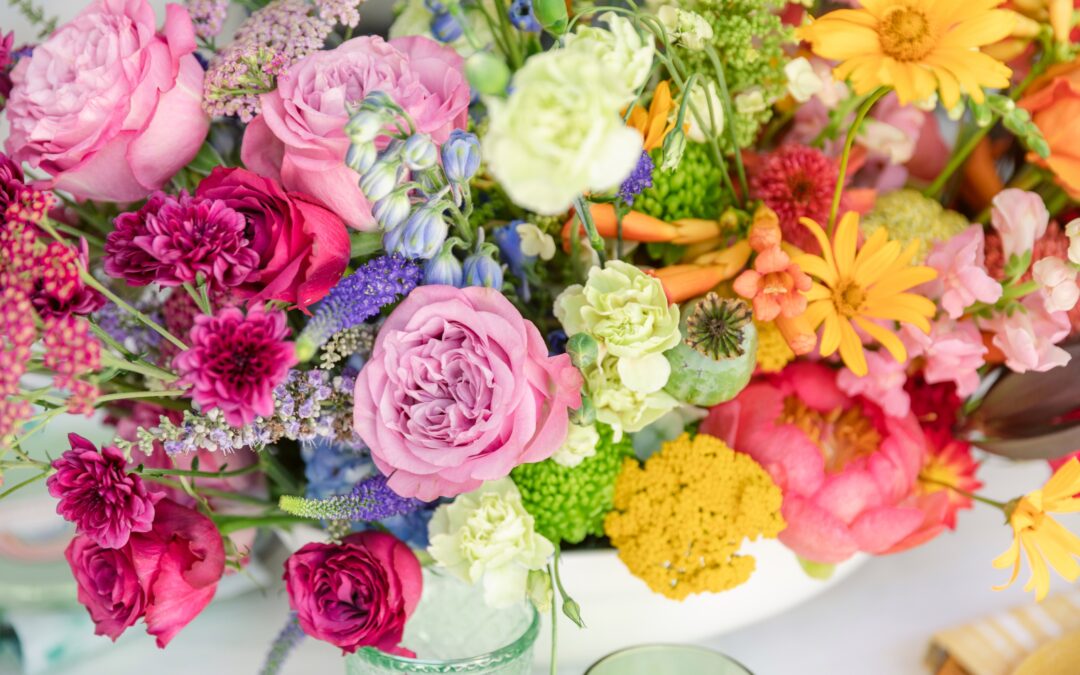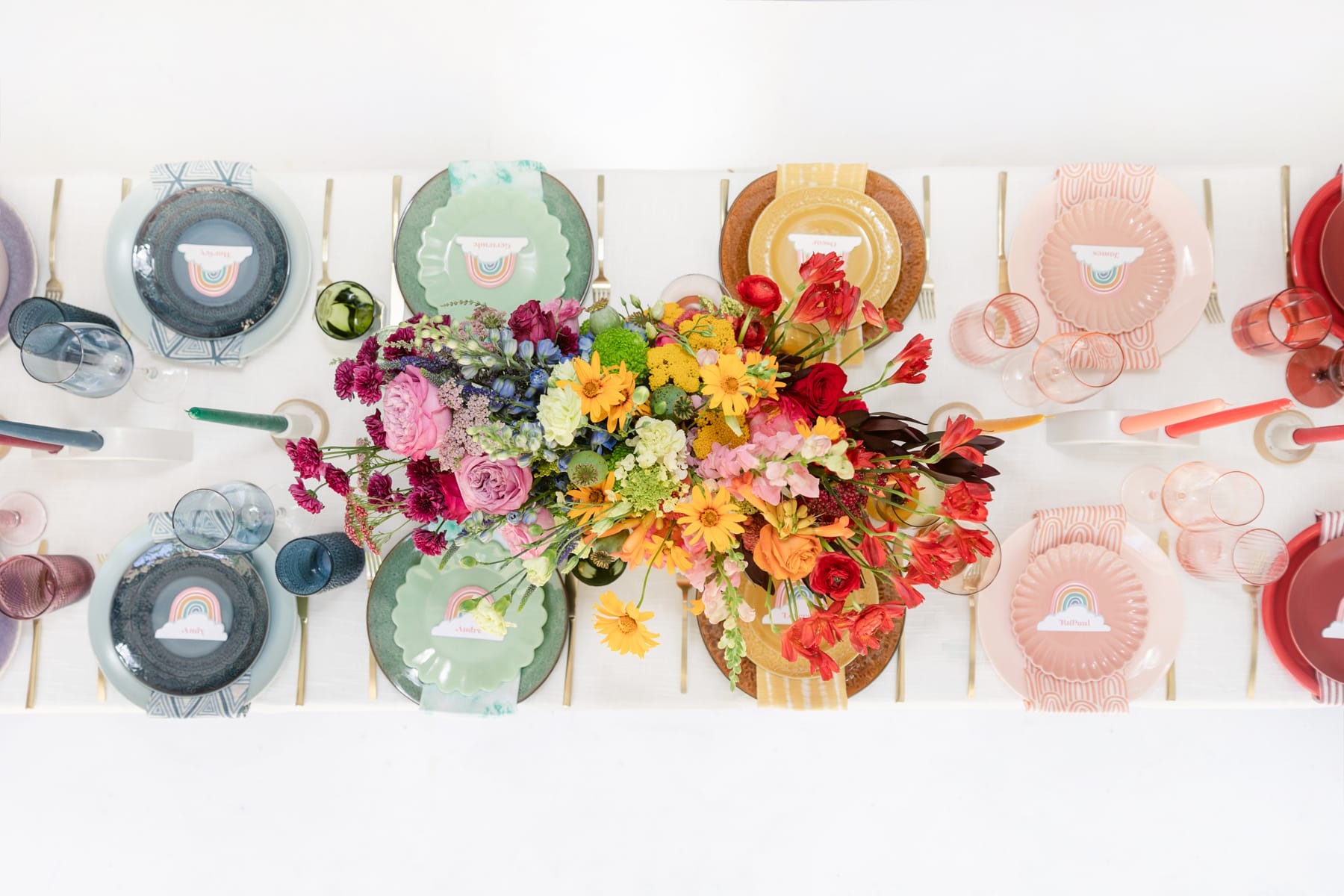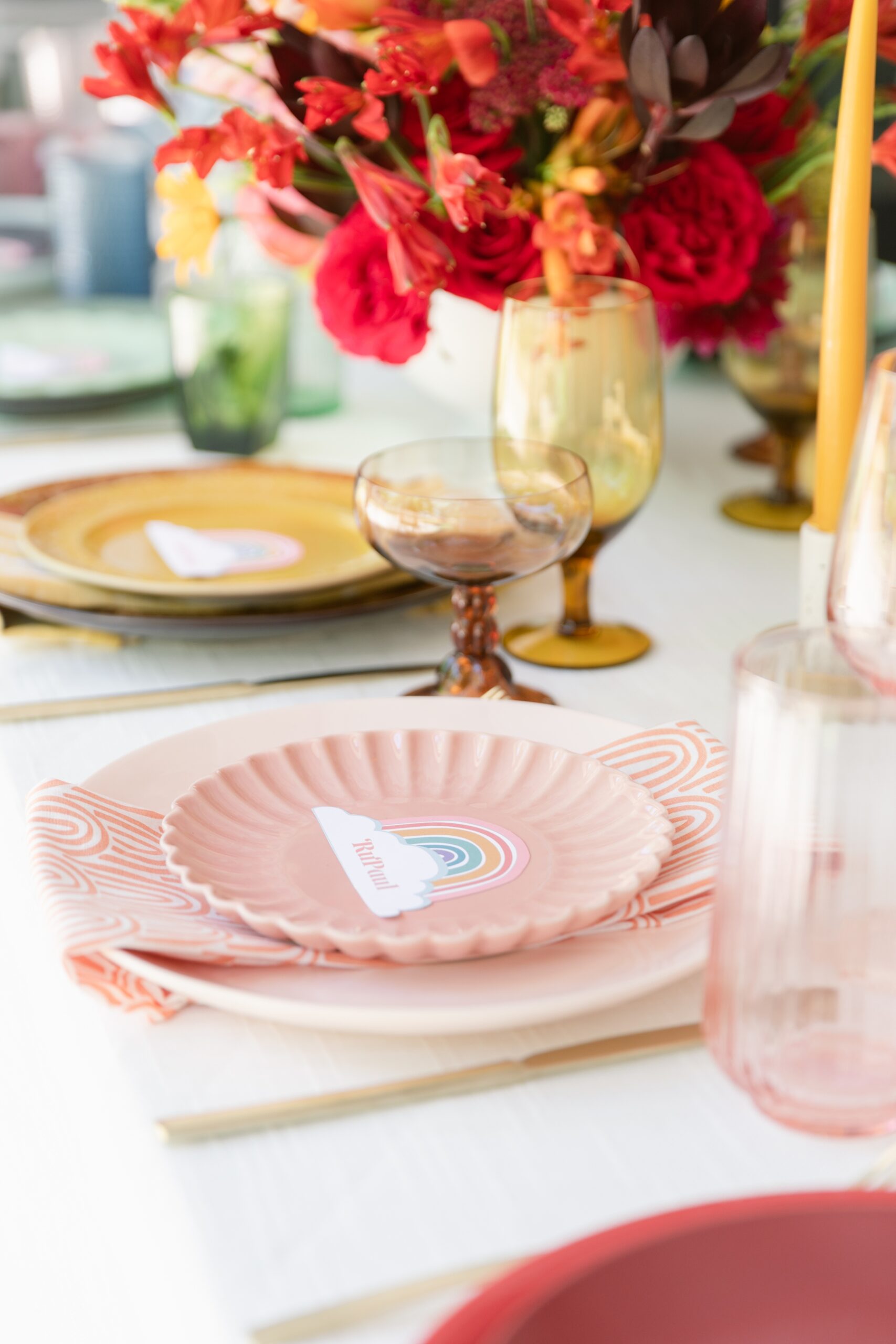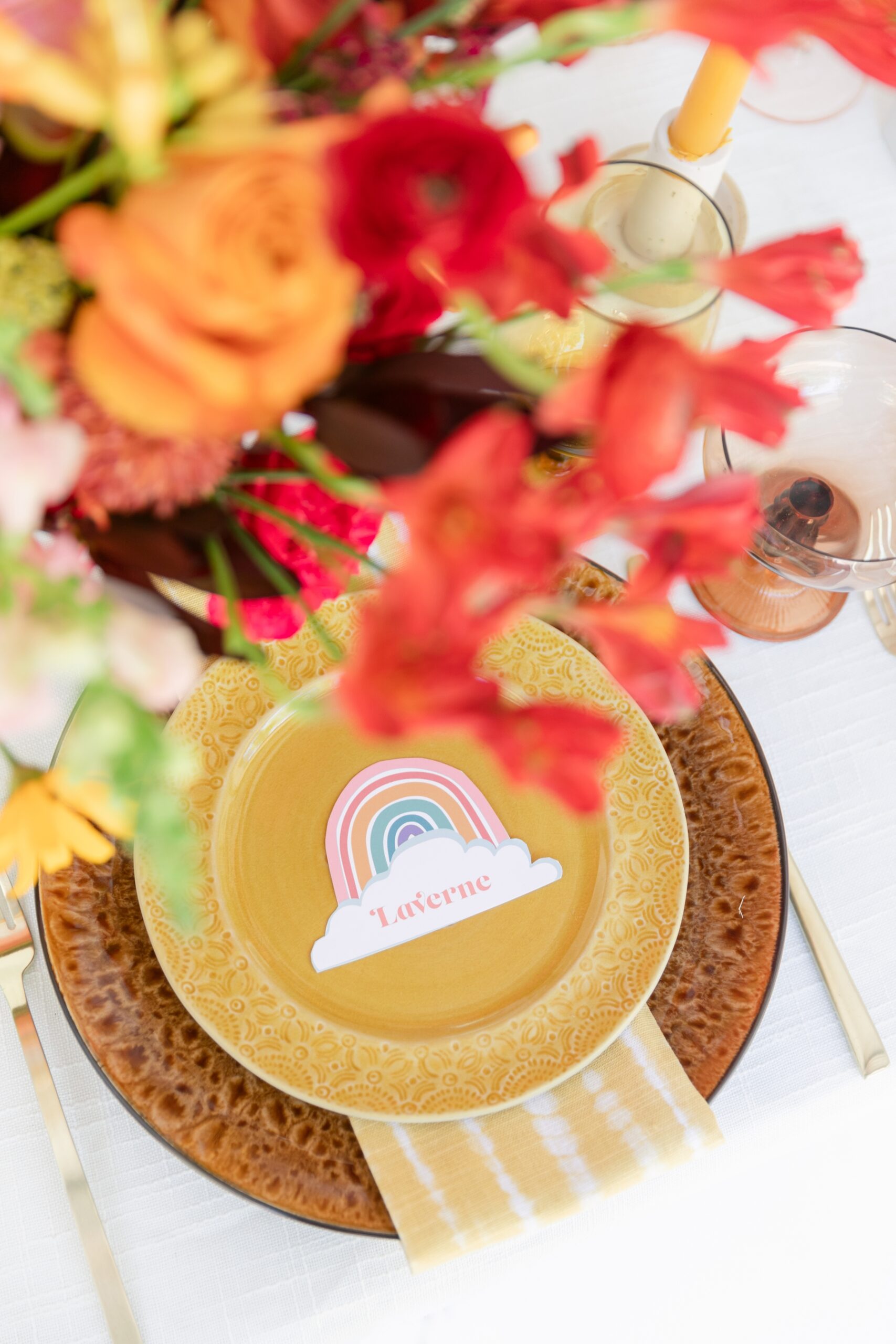I just sat down to write this post about our beautiful Pride table and I realize I CAN’T EVEN with all this bullshit. I am pissed and outraged and even a little scared by all the recent legislation meant to torment and harass my LGBTQIA+ friends. I’d love to point my finger at Florida, but all of my fingers are currently occupied by the constant handwringing caused by my own state of Missouri. Thanks Governor Parson. You and your friends saved us all from the scourge of trans soccer players plaguing our varsity sports teams and drag queens threatening to read Judy Blume’s soft core to fourth graders.
I am a woman of action, so instead of droning on today about things like pretty plates and flowers and such, I am going to dazzle you all with some fun historical facts about gender and gender identity courtesy of the Human Rights Campaign.
Don’t worry. I’m still going to post all of the gorgeous photos Liz took, but consider them more eye candy for today’s lesson. It’s time you had some fuel for your next go around with Aunt Edna. If she drinks too many glasses of cheap Chardonnay at this summer’s family reunion and gets on her high horse about the good ol’ days when men were men and women were women, you can politely point out that she is in fact, an idiot.
Fun Fact No. 1
Did you know around 5000 to 3000 B.C., Gala, described as androgynous or trans priests of the Sumerian goddess Inanna, spoke their own dialect and took on feminine names?
Fun Fact No. 2
Sometime from 200 to 300 B.C., in ancient Greece, some gods were worshiped by galli priests who wore feminine attire, identified as women and have therefore been identified by scholars as early transgender figures.
Fun Fact No. 3
In the fourth century, Anastasia the Patrician fled life in Constantinople, the capital of the Roman Empire, to spend the remainder of life dressed masculinely as a monk, and has become viewed by some scholars as transgender.
Fun Fact No. 4
In South Asia, at least eight-known gender-expansive identities have historically been present in the subcontinent, the most well-known being hijra – third gender people of historical, spiritual, and cultural significance in South Asian society. Hijra and individuals of diverse gender identities have been well-documented in religious and cultural texts and legends. These individuals often form intentional communities for community as well as survival.
Fun Fact No. 5
Around the 18th century, the Itelmens of Siberia recognized a “third gender” called “koekchuch” to describe individuals who were assigned male at birth, but expressed themselves as women.
Fun Fact No. 6
The oldest Western institute studying LGBTQ+ identities was started in Germany in 1919. Institut für Sexualwissenschaft (Institute for Sex Research) performed some of the earliest contemporary affirming medical services. It was eventually destroyed in the rise of German fascism under the Nazi party.
Fun Fact No. 7
In Turtle Island (an Indigenous name for North America), Indigenous communities use the term two-spirit as a modern, pan-Indigenous umbrella identifier for people of another societal and ceremonial gender identity. This term was established in 1990 as a modern, collective term for a historical gender identity describing individuals not considered men or women in most, if not all Indigenous cultures of Turtle Island.
These facts are just the tip of the iceberg. If you want to learn more or do more, I encourage you to visit the Human Rights Campaign website. A quick search also led me to this great list of organizations courtesy of Cosmopolitan.
Now enough seriousness. Let’s pour some fancy cocktails. Life is so much better and prettier when you include all the colors of the rainbow!
With ALL the love,
XO – Jen









Thank you for the educational post, Jen. I hope this gives others pause to think and rather than be judgmental, to instead use their energy towards understanding that it is never wrong to be yourself. Happy Pride Month!
…and your tablescapes are gorgeous!
Thank you Patti:) We have even more Pride fun planned. Tune into Studio STL this Thursday for some very colorful recipes!!!
Sorry! I meant Wednesday June 14 at noon on Studio STL